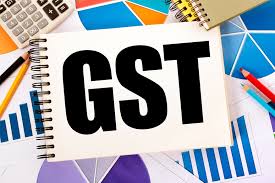Last year, the government had brought in a move to tax an employer’s contribution towards various retirement funds vide Finance Act, 2020. This sought to tax contributions towards Employee Provident Fund (EPF), Superannuation Fund and National Pension System (NPS) in excess of ₹7.5 lakh, which would be considered as a perquisite in the hands of employees. The government also proposed to tax annual accretion by way of interest, dividend or any other amount of similar nature accrued on such funds to the extent it relates to the employer’s contribution. The methodology to calculate the accretions was notified on 5 March in Rule 3B of the Income Tax Rules, 1962.
Budget 2021 further proposed to tax the interest accrued on an employee’s contribution to EPF above ₹2.5 lakh. Subsequently, there was an amendment to Finance Bill, 2021, wherein the government added an additional provision to increase the said limit to ₹5 lakh with a condition that the extended cap is applicable only to the funds where no employer contribution is involved.
The subsequent amendment is certainly a relief to government employees as there is no contribution by the employer to the General PF. However, it seems to bring no difference to private sector employees, as a contribution to the Voluntary PF requires a mandatory contribution by the employer to the EPF simultaneously. The methodology of calculating interest on the employee portion is awaited.
The amendments mean employees earning a high salary income do not enjoy full tax exemption status anymore on investments in PF accounts. To add to the tax burden, interest accrued on employee contribution in excess of ₹2.5 lakh would also be taxed.
The amendments pose challenges to employers/employees.
1. There is ambiguity regarding which fund should be picked for excess contribution if there is a contribution by the employer to both EPF and NPS (whether the Rule 3B formula be applied to each fund on individual basis or all the funds on aggregate basis).
Rule 3B expects the accretion to each fund to be calculated as per the formula. However, it is not feasible to calculate the value of accretions for NAV-based funds like NPS, which are market linked. Here, the criteria for calculation needs to be clarified.
3. It is also important to note that it is difficult for the employer to determine the actual PF interest as the interest for a financial year gets credited after the close of the relevant financial year.
4. As the tax return requires accurate reporting of income, the employee needs to take into consideration the basis adopted by the employer for computing perquisite and assess if any additional disclosure is required. Employers should communicate the basis of computation so that the employees could revisit the computation and assess, if any additional disclosure is required.
The government’s intent is to rationalize tax-free income on EPF accounts. However, the above-mentioned points need to be addressed in order to ensure effective implementation.




Comments
Post a Comment